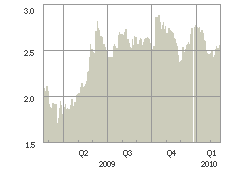There are 168 issues of exchange-traded debt available over the TSX. A lot of these issues are illiquid – 58 issues today did not trade.
None of these issues are trading below 60 cents.
There are 5 issues (3 issuers) that are trading between 60 and 69.9 cents.
There are 8 issues (6 issuers) that are trading between 70 and 79.9 cents.
There are 9 issues (8 issuers) that are trading between 80 and 89.9 cents.
There are 23 issues (21 issuers) that are trading between 90 and 99.9 cents.
The rest of the issues (123) are trading at 100 cents or greater.
If you compared these statistics with the same statistics one year ago, it would have been significantly different – there were lots of issues that were trading well below 80 cents.
The exchange traded debenture market on the TSX right now is mostly a done deal and investors should not look toward them to provide disproportionate returns beyond coupon payments. I have thoroughly analyzed the various issues that are trading cheaply, and there is limited value.
The events that occurred in late 2008 and early 2009 was likely a once in a decade opportunity in the corporate debt market. Time to start looking at equities again once everything matures.
